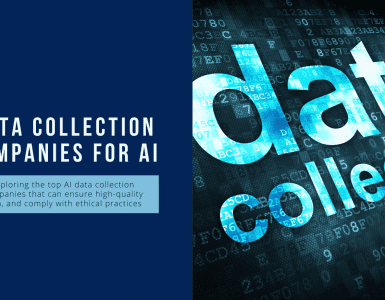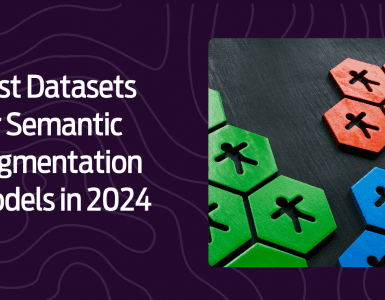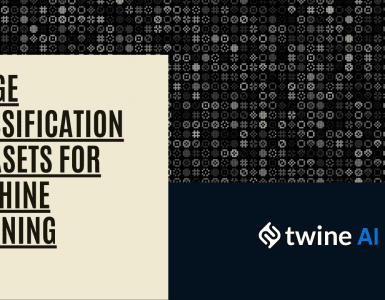Many business leaders are utilising AI through the acquisition of ready-made solutions or by creating their own. Unfortunately, a significant number of AI projects do not yield satisfactory results or end up failing. As per Harvard, the failure rate is as high as 80%
The process of training AI models is a major obstacle in the development of AI systems. To aid businesses and developers in improving this process, this article interprets steps and recommends necessary actions for training AI models effectively.
1. Preparing and preprocessing the Data
Preparing and preprocessing data for AI training involves several steps to ensure that it is in a suitable format and quality for the training process. High-quality data is necessary for these models to carry out tasks and imitate human behaviour. Therefore, this stage is crucial in the training process. If you choose to work with a specialised AI data collection service or prepare the datasets internally, it is essential to complete this part of the process accurately.
Twine AI provides data collection services to train AI and machine learning models. Leveraging our freelance marketplace with over 500,000 freelancers, Twine AI is trusted by leading generative AI teams, public companies, and startups.
These are some recommended methods that can aid in effectively carrying out this procedure:
1.1 Collect the right data
The first step in data preparation is to select the right dataset required for training the AI model. The method of data collection depends on the project’s scope and objectives. Data collection options include custom crowdsourcing, private/in-house collection, outsourcing custom datasets, precleaned/prepackaged datasets, and automated data collection.
For instance, collecting videos showing different types of human activities. Videos could show people walking, running, cooking, assembling items and more. These could help train computer vision models for human activity recognition and similar tasks.
Tips from Twine AI
Make sure you have a clear understanding of the goals and requirements (e.g., what kind of data (voice/vision), demography, number and type of files, etc.), plan your storage mechanisms, establish data pipelines, and make sure to incorporate new data into the training dataset when required.
1.2 Processing of data
In order to prepare data for training machine learning models, it is necessary to perform data cleaning and feature engineering as the collected data can often be disorganised.
- Clean the collected data by removing any duplicates, errors, or inconsistencies. This process may involve data deduplication, handling missing values, and standardising formats. Clean data is essential for training accurate and reliable AI models.
- Feature engineering involves transforming raw data into meaningful features that can be understood by AI models. This may include selecting relevant variables, creating new features, and normalising or scaling the data. Well-engineered features help AI models learn more effectively and improve their performance.
- Data Splitting: Split the prepared data into training, validation, and testing sets. The training set is used to train the AI model, the validation set is used to fine-tune the model and select hyperparameters, and the testing set is used to evaluate the final performance of the trained model. The rough standard for train-validation-test splits is 60-80% training data, 10-20% validation data, and 10-20% test data
1.3 Annotating data accurately
Once the information has been collected, the subsequent task is to annotate it. This process entails tagging the data in a way that can be comprehended by machines. It is crucial to prioritise the excellence of the annotation to guarantee the overall excellence of the training data. Effective data annotation methods vary based on the nature of the data being annotated.
To gain a better understanding of data annotation and its significance, please refer to this resource: https://www.twine.net/blog/data-annotation-in-machine-learning/
2. Choosing the Right Model
One of the essential stages in machine learning model training is selecting the suitable model. This entails deciding on the appropriate model structure and algorithms that can effectively solve the problem at hand. The decision of which model to use is crucial as it directly impacts the model’s performance and accuracy.
The process of model selection typically begins with identifying the problem, available resources and desired outcome.
While it sounds like a cakewalk, there are a few criteria to take into consideration before,
- Complexity of the problem: Simpler problems may only require simple linear models, while more complex problems like computer vision or natural language processing require deeper neural network architectures.
- Size and structure of the data: Larger structured datasets can train more parameter-intensive models. Smaller or more unstructured data may limit model complexity.
- Available computational resources: Models require sufficient memory and GPU/TPU processing power during training. More limited resources restrict model size.
- Desired accuracy level: Applications demanding very high accuracy like medical diagnosis require high-performance complex models. Other applications may tolerate simpler models.
3. Initial training phase
Once the data is collected and labelled, we can start training the machine learning model on that data. At this stage, we need to be careful that the model does not overfit. Overfitting means the model focuses too narrowly on the exact details of the training data, rather than learning general patterns.
For example, if we show a facial recognition model only pictures of men with beards, it may become very good at recognising bearded men, but perform poorly on clean-shaven faces. This is because it overfits the tiny specifics in the training data rather than broader gender patterns.
To prevent overfitting, we use techniques like limiting model complexity and data splitting. If a model performs well on training data but poorly on validation data, overfitting is likely occurring.
4. Validation during training
After completing the initial training phase, the model will progress to the following stage: validation. During this phase, you will confirm the effectiveness of the machine learning model using a different dataset known as the validation dataset.
It is important to thoroughly examine the findings derived from the fresh dataset in order to detect any deficiencies. Any unaccounted for factors or omissions will become apparent during this phase. The presence of overfitting can also be observed at this point as explained above.
For example, We train an image classification model to categorise photos of cats and dogs. The data is split into training images, validation images, and test images.
During training, the model learns patterns in the training cat and dog photos to assign the correct labels. However, if we only test on the training images, the model may overfit and memorise unnecessary details instead of learning generalisable patterns.
This is why we validate performance on a separate set of images the model has not seen before. If accuracy is high on training images but low on validation images, overfitting has likely occurred. Catching this early allows correcting the course before finalising the model. Using an untouched test set then gives a final unbiased accuracy measure.
Two key frameworks to keep in mind during validation,
- Minimum validation framework – The most effective validation framework to use when dealing with a large dataset is the minimum validation framework, as it requires only one validation test.
- Cross Validation Framework – The process is similar to the minimum validation framework, except that the model is evaluated multiple times using a random validation dataset. This approach is most suitable for simpler projects with smaller datasets.
5. Testing the model
Once you’ve validated your model, it’s time to test it. The data used for testing should be the ‘test data’. Following are the steps that you can use to test the data,
- The test set should be preprocessed similarly to the training data.
- Utilise the trained model on the test data.
- Assess the model’s predictions against the real values.
- Determine appropriate performance metrics (such as accuracy for classification or MAE for regression).
- Analyse the cases where the model made mistakes.
- Compare performance with other models or baselines to set the benchmark
- Record relevant test metrics and observations for future use.
Final thoughts
Training AI models requires meticulous effort – from data collection to evaluation and continuous tuning. If a computer vision model for autonomous vehicles is struggling to handle rainy conditions, the training data likely does not contain enough diversity of rainy and wet road imagery. As a result, the model does not accurately recognise hazards during storms.
Working with Twine AI you can custom-build and preprocess training datasets specifically tailored to client needs. By leveraging its global freelancer marketplace, Twine AI provides access to diverse contributors to collect well-rounded data at scale.
Whether needing video, audio or other formats, we handle end-to-end data production and validation so businesses can train AI responsibly.








